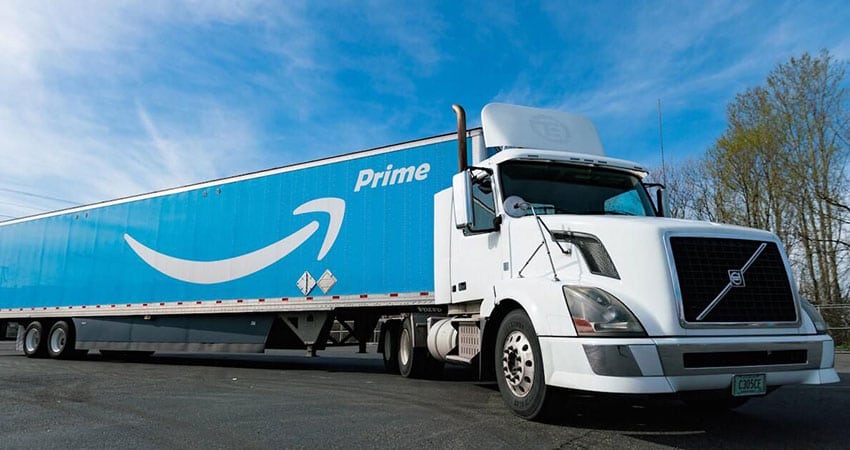Once again Amazon is in the news about logistics and the potential for encroachment on territory owned by UPS and FedEx, both of which have Amazon as a major client, the next iteration of what began as Amazon Seller Flex last fall.
Several news outlets are reporting that Amazon is starting up a new service called Shipping with Amazon (SWA), in keeping with its services nomenclature. The service, which will handle shipments from third-party sellers on Amazon, is slated to launch this year in Los Angeles after a trial that started in 2017. Plans call for expansion to other markets and inclusion of both B2B and B2C shipping, according to reports.
And once again, experts are pouring cold water on the concept of Amazon creating a national logistics network that can take sizeable volume away from the major carriers and the U.S. Postal Service. For instance, Amazon leases 40 cargo jets and has about 300 U.S. fulfillment facilities including sortation centers, numbers that are dwarfed by the carriers.
Amazon generated an estimated 1.2 billion shipments in the U.S. in 2017, according to supply chain consultants MWPVL International as cited by the Wall Street Journal, most of which were delivered by the big three (USPS, UPS and FedEx).
That’s not to say that Amazon couldn’t make a dent via the crowdsourced route through a network of local couriers and its fulfillment centers to haul third-party volume – or even offer it as a service to shippers outside its network. The company certainly has the tech and innovation chops, but scaling such an operation is a major challenge.
Publicly, UPS and FedEx have not seemed particularly concerned about the impact of Amazon’s moves. But the carriers are certainly eyeing it warily and investors have gotten spooked, even if Amazon reportedly represents a low-single-digits percentage of business for both. “It’s a very competitive space,” said Postmaster General Megan Brennan when asked about Amazon’s potential encroachment, according to the WSJ. “We have to earn that business every day.”
In a research note, Baird analysts Colin Sebastian, Benjamin Gaither and Dalton Kern argue that Amazon has been testing third-party package delivery “for several years,” adding that it already employs contract drivers in markets where Prime Now same-day delivery is offered and has been quietly shipping from third-party warehouses.
“SWA represents a natural extension of third-party logistics services, particularly in markets where Amazon has the delivery density to offer a competitively-priced alternative to UPS and FedEx,” Baird said in the note.
Baird analysts again see this as another step toward offering “shipping as a service” much like Amazon Web Services, which has become a major cloud computing provider, noting Amazon’s drop shipping and FBA Onsite programs. Baird identified shipping services as a $400 billion to $500 billion market opportunity for Amazon.
Baird analysts also point out that Amazon’s buildout of transportation and logistics assets has already resulted in benefits such as greater retail fulfillment efficiency and shipping cost reductions in Q4. “Amazon’s fleet of 767 cargo planes allows for later two-day shipping cutoff times for Prime members, and more flexible inventory management across fulfillment centers,” they add in the note.
There is also a major B2B component in Amazon’s move. Ray Grady, President and Chief Customer Officer at CloudCraze, said the emergence of SWA shows Amazon’s desire to disrupt B2B as well as B2C commerce.
“They’re making large investments in B2B commerce and if businesses want to compete and maintain their market share, they’ll need to offer an online buying option as well,” Grady said. “It’s important for businesses to own the ecommerce experience and the customer from end to end and not outsource or give up margins to Amazon. This move should serve as a call to action for B2Bs.”
Scott Webb, president of Avionos, said B2B companies have been slower to adopt supply chain innovations because they typically work with larger products more deeply rooted in brick-and-mortar commerce. But SWA will get their attention, Webb said.
“As Amazon’s shipping expands, we’re seeing online and offline further converge in B2B and a more streamlined digital process emerge that will ultimately lead to greater efficiencies and customer satisfaction” he said. “We can expect this initial rollout to serve as a basis for improving the offering, with Amazon taking an iterative approach as they reach new geographies.”

